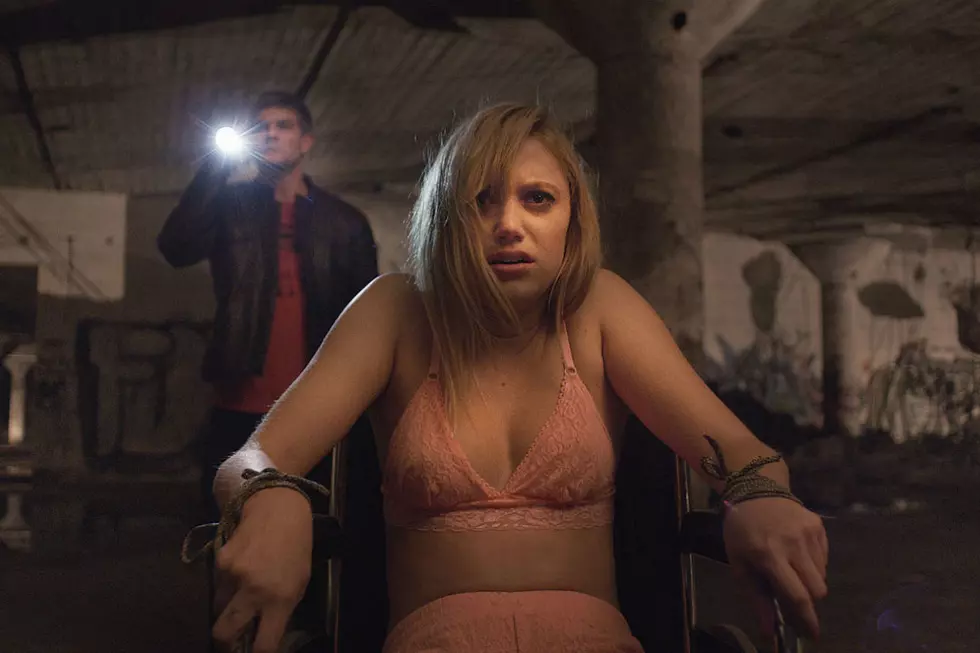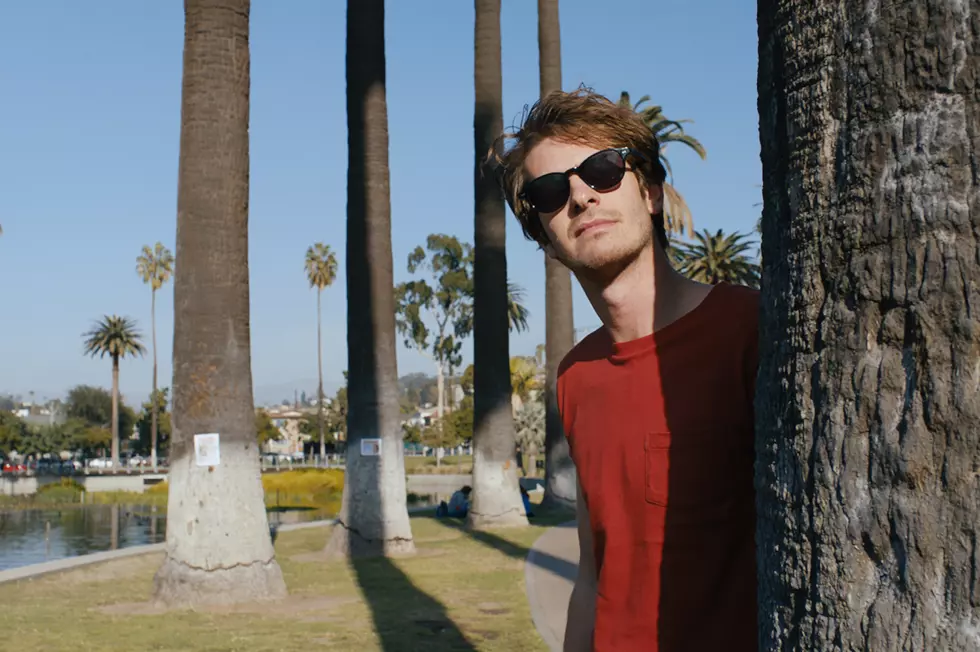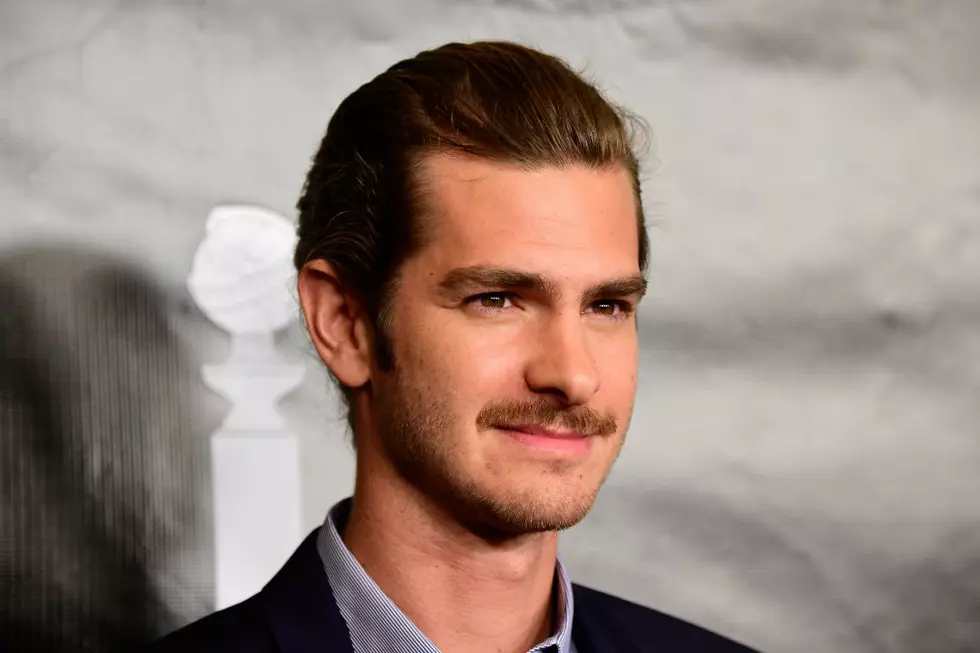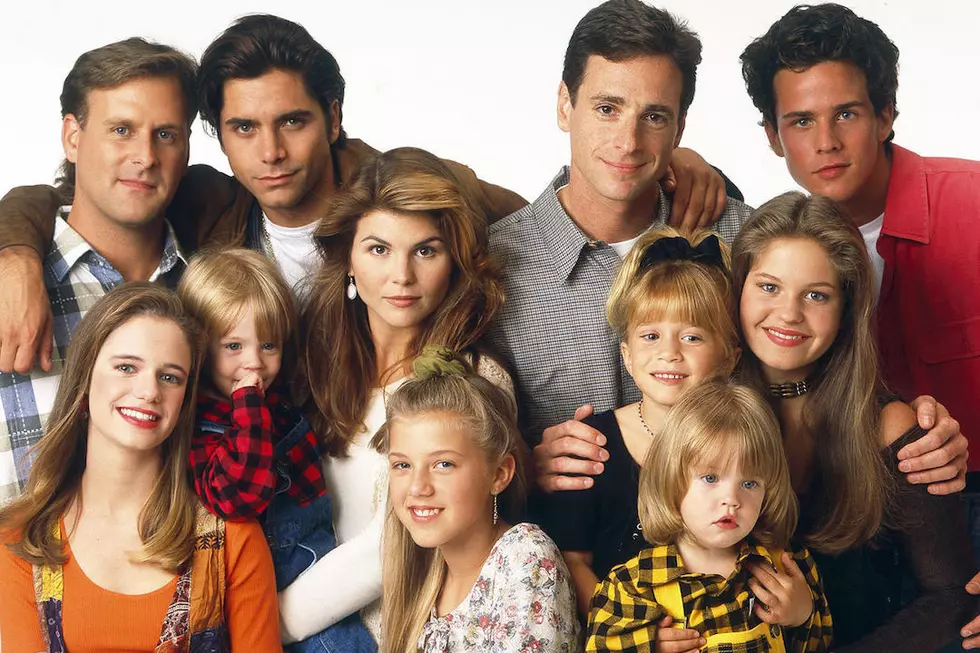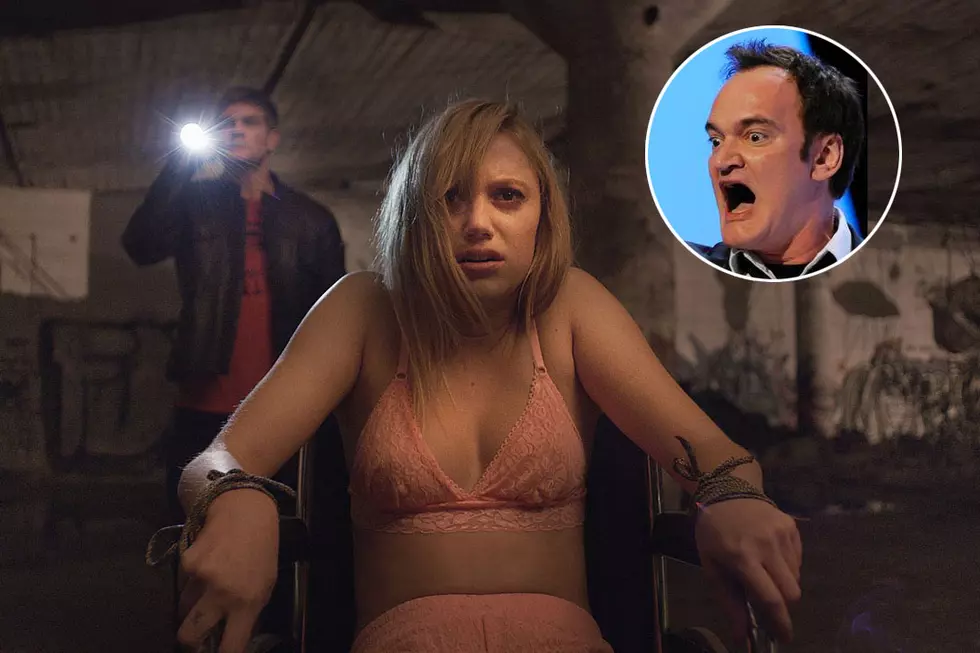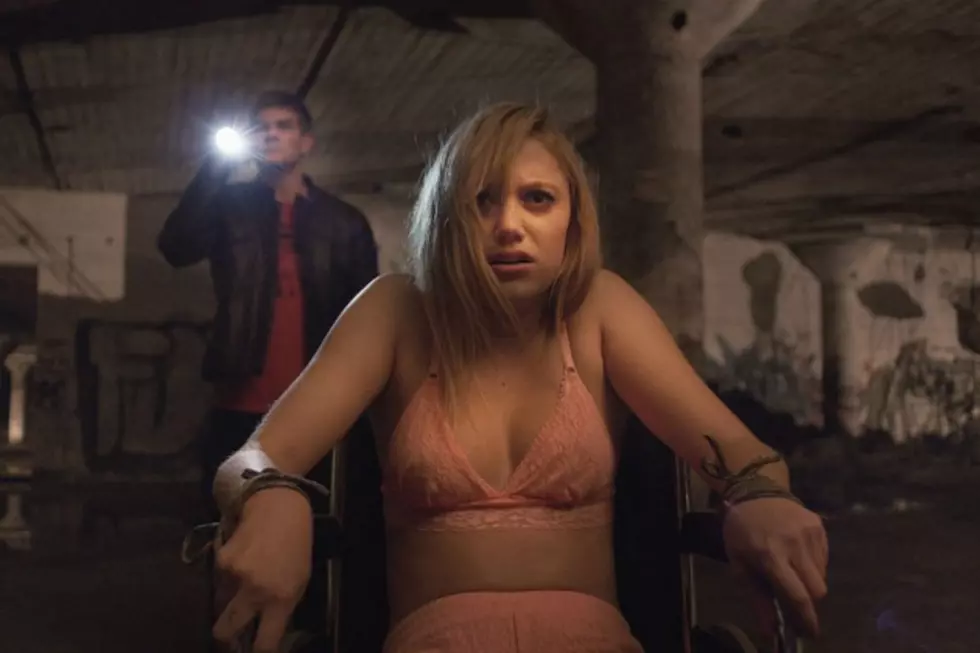
‘It Follows’ Director David Robert Mitchell on His Distinctive and Timeless Horror Film
David Robert Mitchell left quite an impression with his first feature film, The Myth of the American Sleepover, an honest and subdued look at teen friendship and coming of age. The director has now returned with his second feature, It Follows, a thoughtful horror film in which teens are once again the focus, this time coping with a sexually-transmitted ghost. Mitchell has a knack for understanding young people, with a keen ear for their dialogue and a sharp perception of the somewhat separate world they inhabit. Along with a handful of other directors, Mitchell has helped to reinvigorate the horror genre, which has suffered in recent years from the influx of found footage and banal, unoriginal concepts. We had a chance to speak with Mitchell about It Follows, the genesis of this layered and impactful horror film, and the timelessness of what he’s created.
I absolutely love this movie. I’ve seen it twice now.
Oh, cool, thank you!
I’m especially fond of the sexual politics in the film.
Yes. [Laughs] It’s interesting. There’s all kinds of ways of looking at it, for sure.
It’s such a layered concept. Where did this idea of a sexually-transmitted haunting come from?
The basic idea came from a recurring nightmare that I had when I was a kid. When I was like, nine or 10, I was being followed by this monster and it looked like different people, and it would just walk very slowly toward me. I could see that other people didn’t seem to react to it, and it would just follow me into my house and my family wouldn’t see it. I would have to run, climb out a window and run down an alley. It wasn’t that hard to get away from it, but you know, it was the feeling of anxiety that it’s always walking toward me. I stopped having that when I was young—the dream—but I remembered it. Over the years I kept thinking it would be fun to try and make a horror film, and I kept thinking about that idea, and started adding little pieces to it over the years. Eventually I added the sexual element, of course. It happened over a long period of time, and I don’t remember every little piece of it, but yeah, I wrote it a few years ago. That’s when I put everything down on paper and collected all these little fragments of ideas.
Although it’s different from your first feature in that it’s a horror film, it still feels very much of a piece with Myth of the American Sleepover—it feels like a natural progression.
Yeah, that’s cool. It feels very normal to me. It never felt strange to me, but I did have people seem to be a little puzzled as to why I was making this movie. I love all different kinds of movies and many different genres, and horror’s one of them. I just like the idea of challenging myself and doing variations on certain kinds of films, putting a little bit of myself into them. It’s sort of my version of those genres.
You have a distinct talent for capturing the lives of teenagers and their voices, which few filmmakers have. How are you able to relate to something that others seem to find difficult?
Ultimately it’s just, for any character I’m writing...You know, I’ve only made two features at this point and they both feature young people. I write a lot, I have a ton of material, and some of my films in the future will deal with many different characters of different ages. I guess growing up I was just really fond of certain coming of age films, and some of those are sort of inspiring to me in terms of me wanting to make movies. That’s sort of where some of that comes from, but as far as being able to write it? You know, I’m not trying to write for whatever a “modern teenager” is. It’s been a lot of years since I was a teenager. Some of it is about thinking back to how I felt in some ways, and some of it is just imagining a situation. It’s not so much autobiographical. I’m just trying to be sympathetic to the characters, and I try to do that with anything I write. This is just the age range of the two films that I’ve deal with, and that’s sort of what I want to do with any character that I’m writing about. I want to really care about them. I want other people to care about them, and I think that’s maybe where it comes from. There’s always a little part of myself that I try to place within the character. I want to identity with them. It’s sort of hard to explain.
There’s nothing condescending about the way you treat these characters. The film could come off as a sort of cautionary horror tale, but you don’t talk down to these characters.
In what way, specifically?
I feel like a teenager could watch this and come to their own conclusions. It’s not instructional or telling them how dangerous sex can be—they already know that.
It’s not my intention to suggest that people shouldn’t have sex. It’s something where I’ve seen some people sort of interpreting the film that way. I don’t have a puritanical message or a puritanical agenda with this movie. The way I see it, the characters do open themselves up to danger through sex, but to me it’s larger than that. It’s really just the act of living, and sex is a part of that, but sex is also the way in which they can kind of temporarily be free, so to be okay they have to have sex. And again, without me trying to get into ways in which I would interpret that, I think it’s a little bit more complicated than just sex equals death. But I’ve seen that in a lot of people and that’s sort of the dominant read. I do hope that it’s interpreted maybe beyond that.
I’ve always been interested in the inherently terrifying and fascinating concept of how you can have sex with one person, and you’re having sex with everyone they’ve had sex with, and everyone those people have had sex with, and so on…
That’s part of it. The reason that I incorporated sex into this is the way in which sex connects people. And not just physically, but emotionally as well. Within the film there’s this sort of chain and a sequence of events that goes beyond what’s visible in the film through, you know, whatever this thing is— this monster, if you want to call it that. There’s something kind of unknowable about that. I think there are probably parallels in terms of relationships and sex and all of these things.
When you think about it, those connections are infinite. This thing could go on forever in all directions.
Exactly. To me it’s just something that’s representative of a nightmare. Within the film it is a physical thing. It is real within the film, but only in the sense that a nightmare is real for us. It sort of defies explanation or logic. It just simply is. It is that very thing.
I had this conversation with a friend prior to seeing the film, and he sold me on it by describing it as the heir to A Nightmare on Elm Street. Was that an influence on you at all?
I grew up loving those movies. I definitely see pieces of those films within here. Certainly, even on a subconscious level, it seeps in there. Some of the relationships, like with the boy across the street—there’s some parallels that I see that are pretty direct, and beyond that as well. Yeah, A Nightmare on Elm St., and there’s a bunch. And even as I have a little more distance from it, there were a few things in here that were sort of conscious, direct references. The pool thing, I was definitely thinking about Cat People. Others are just because I watched these movies so much and loved them, and as I was trying to go and make a horror film and try to embrace the cliches to some degree, and some of these sort of familiar tropes. Some of it, in terms of approaching it, [comes from] a very loving place, but sort of altering them in some way, and that just comes from me trying to do my take on it. I want to make something that has something unique about it. That’s always the goal.
There are definitely some unique touches, like Yara’s handheld electronic device...
The shell phone e-reader!
It basically looks like a birth control compact.
Yeah, it kind of does. It’s actually a ‘60s shell compact, like a mirror compact that we turned into an e-reader. I wanted an e-reader in there and I didn’t want a particular model that everyone would date by a particular year. I felt like it would feel strange within the film. It would be too grounded in the moment. There’s sort of a lot of odd, anachronistic production design elements, and it’s all sort of to somewhat confuse you, to be honest. It’s about not allowing the audience to place it within a specific moment in time, so it’s somewhat timeless and it’s also something that resembles things out of a dream to some degree.
Rich Vreeland’s throwback synth score also adds to that dreamlike quality.
I’m really happy with what Rich did with the music.
You became aware of him through his video game work, correct?
Yeah, yeah. I was playing Fez—it’s a really great game—a few years ago, and I really enjoyed the game and just really loved the music. At that point I had written It Follows, and I was starting to try to figure out how to put it together. I wanted a really wonderful score, I wanted something that could stand on its own, to be honest. Something really bold. I just thought he was someone who could do that. So I reached out to him and convinced him to do it, and it was a really cool process. I’m really happy with the end result.
Do you have any plans for your next feature? You mentioned making films that will include characters of many different ages.
I just have a bunch of stuff. I write all the time. I have a lot of scripts, and...what’s next? I’m hoping to make another film this summer. I have a couple of projects that I’m pushing, like, really hard to do. One of them is kind of a drama. It’s hard to explain. The other is a bit of mystery and adventure. My stories are always difficult. I tend to not want to say what they are until they’re done. I mean, even with It Follows, I literally told no one. I maybe just said “I’m making a horror film.” It would be the most that I would say, and that’s because the concept for It Follows is so damn ridiculous that I was so embarrassed to even try and explain it. It just sounds so silly outside of the tone of the film. I knew that if I had the chance to make it and put it together, it could work. I guess some of my material is that way. It’s sort of about how it’s done, as opposed to the sort of quick pitch of what it is. So I have a bunch of stuff, but it’s just an issue of what comes together first.
It Follows opens in theaters on March 13.
More From ScreenCrush
